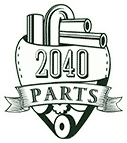|
What is it? Historically, general aviation autopilots have flown navigational flight paths by either “tracking” or “coupling to” CDI or HSI needle deflections. This means that the system had to deal with needle deflection variations and noisy signals, resulting in some unintentional wandering, particularly at station passage. Pilots of “big iron” have enjoyed the benefits of roll steering since the early 60’s through the functional output of Inertial Navigation System (INS). Their flight management systems output roll steering commands to the autopilot for all of the leg types typically encountered in instrument flying. Roll steering commands are inherently more accurate as they are based on known location, flight path, ground speed, and anticipated maneuvers; and they fly the aircraft much more precisely. How does it work? As opposed to “tracking”, which essentially is reacting to signal input, GPSS anticipates course changes. When approaching a waypoint, for example, GPSS transitions to a new leg by anticipating arrival at the waypoint, and initiating a coordinated turn so that the aircraft is established on the new heading without overshooting or under-shooting the new course. When the aircraft is equipped with a GPS navigator that outputs composite roll steering commands, the pilot can hand off the steering of the aircraft for enroute or approach flight directly to the navigator. In enroute flight, GPSS will fly the desired flight path as defined by the flight plan stored in the GPS, very accurately, since the GPS not only knows exactly where it is, but where it’s going. As the leg changes are anticipated, the GPS navigator calculates the exact turn initiation point required to fly from the centerline of the current leg directly on to the centerline of the new leg, based on the ground speed of the aircraft. It then sends steering commands to the GPSS function, and the autopilot flies a precisely curved transition path between the legs. In addition to more accurate course tracking, GPSS significantly reduces the pilots’ workload by not having to set the course arrow or heading bug at leg changes (although many pilots may make those setting changes for enhanced situational awareness). GPS & GPSS - now and in the future Currently, many general aviation GPS systems output composite roll steering commands for enroute navigation and limited approach transition procedures such as DME arcs. GPS system manufacturers are rapidly expanding their databases and software to include full procedure approaches, transitions to approaches, procedure turns, holding patterns, and more. Only the items in the photo will be shipped! |
GPS for Sale
 Gpsmap 196(US $100.00)
Gpsmap 196(US $100.00) Kln 89b tso gps assembly and connecting kit(US $1,000.00)
Kln 89b tso gps assembly and connecting kit(US $1,000.00) Garmin gps iii pilot aviation handheld 12 parallel channel receiver w/ carry bag(US $189.99)
Garmin gps iii pilot aviation handheld 12 parallel channel receiver w/ carry bag(US $189.99) Garmin gns530aw gns530w with high power transmitter 011-01066-00 gns 530w 530aw
Garmin gns530aw gns530w with high power transmitter 011-01066-00 gns 530w 530aw Garmin gps 155xl p/n 011-00412-00(US $1,100.00)
Garmin gps 155xl p/n 011-00412-00(US $1,100.00) S2357-1 clamp pack of 7(US $21.00)
S2357-1 clamp pack of 7(US $21.00)
Bajaj RE60
Wed, 04 Jan 2012Bajaj, the Indian manufacturer most famous for its two- and three-wheeled exploits, has now turned its attention to the automotive sector. The RE60 is the end result of a four-year development that first began with partner Renault-Nissan and the Lite concept, before moving solely in-house. The sub-400kg car is powered by a rear mounted engine and was conceived, originally, as a rival to the blighted Tata Nano.
CAR interviews new Renault design chief Laurens van den Acker (2009)
Thu, 15 Oct 2009By Guy Bird Motor Industry 15 October 2009 10:29 CAR: How did you get the top design job at Renault? LvdA: From what I’ve been told [outgoing design boss] Patrick le Quément was asked to come up with three candidates, two internal and one external, and somehow I bubbled to the top of the external candidates. I think the criteria included international experience, being relatively young and having a good record.
GM to buy Tesla? Seems highly unlikely
Wed, 01 Jan 2014GM to buy Tesla? Seems highly unlikely Tesla is more like a technology company than a car maker, but it’s managed to turn out a very able car in the Model S; perhaps the only car made so far that really is an alternative to an ICE car. That success has lead a US analyst - Yra Harris of Praxis – to declare that GM has Tesla in its sights as an acquisition target in 2014.



